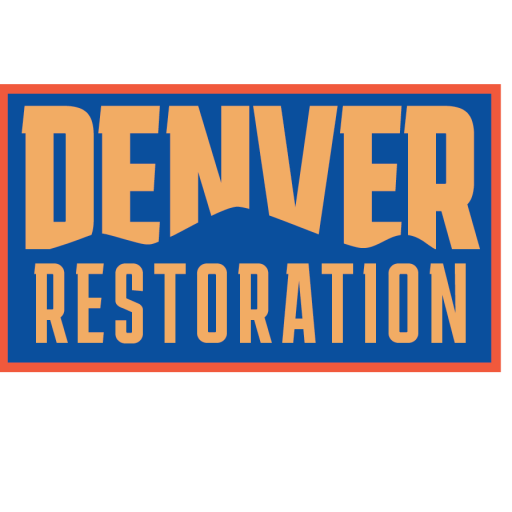Understanding the Essentials of Mold Remediation
The damage caused by mold can be devastating, and it is not something to be trifled with. Mold can affect not only the structure of your building but also the health of those dwelling within. Fortunately, understanding the incredibly complex world of mold remediation can help mitigate the effects of mold. In this guide, we’ll walk you through a simple mold remediation process, without resorting to any confusing technical jargon.
How Mold Operates – Identifying the Risks
Mold is a silent attacker, creeping into your property and quietly wreaking havoc. It thrives in damp environments, rapidly replicating and spreading, ultimately leading to significant health and property damage. Exposure to mold can lead to allergic reactions, respiratory problems, and sometimes, even more severe health issues.
Understanding the risks associated with mold is vital. Being equipped with this knowledge will allow you to hunker down and prepare for combat. This Reddit thread throws light on a homeowner’s struggle with mold, and the costs that come attached to it.
Assessing the Situation – The First Step
Before you decide on any course of action, it’s important to first assess the situation. This involves identifying the extent of mold damage, the type of mold present, and the areas it has affected. A professional assessment will be able to reveal the severity of the issue, helping in creating an effective plan for mold remediation.
Implementing the Remediation Plan – Rolling Up Your Sleeves
Once the situation is assessed, it’s time to implement the remediation plan. This usually involves a three-pronged approach:
– Mold Containment: This step involves isolating the affected area to prevent further spreading of spores.
– Mold Removal: Mold infested materials are removed and replaced. This may involve discarding porous materials like drywall and insulation, where mold is often deeply entrenched.
– Cleaning and Sanitizing: This involves deep cleaning all the affected areas and belongings, ensuring no trace of mold is left.
Each step must be meticulously executed to avoid recurrence. This guide provides an excellent roadmap for tackling severe mold infestations.
Avoiding Future Mold Infestations – Staying One Step Ahead
Once the mold has been dealt with, it’s crucial to ensure it doesn’t return. This involves maintaining a clean, dry environment, regularly inspecting your property, especially after a water damage incident, and quickly addressing any water leaks.
Mold prevention is as important as remediation. It’s advisable to use professional-grade products for cleaning and sanitization. This resource suggests a fantastic cleaning hack that might help.
Remember, tackling mold may seem daunting, but with the right knowledge and resources, it doesn’t have to be. A simple mold remediation process can help restore your property and guarantee the health and safety of its occupants.
Know Your Enemy: Identifying Different Types of Mold
Often, understanding the enemy is the first step in formulating a successful strategy. The same applies to mold. Surprisingly, not all molds are harmful; however, it’s the dangerous types that cause issues. The most common hazardous molds include Stachybotrys Chartarum (Black Mold), Aspergillus, Cladosporium, and Penicillium.
Each type has unique characteristics and impacts on human health. For instance, Aspergillus can cause lung infections and allergic reactions, while Black Mold is infamous for producing toxins that can trigger severe health issues such as neurological problems and pulmonary hemorrhage in severe cases.
Being able to identify these molds and comprehend their potential health risks can give you an upper hand in dealing with them. This Quora thread focuses on whether professional intervention is necessary for mold removal, a common query among homeowners grappling with mold issues.
The Role of Professionals: Why Expert Help is Crucial
Many homeowners attempt to handle mold themselves, often leading to further dissemination of mold spores and exacerbating the problem. Professional mold remediation companies possess the expertise, equipment, and in-depth knowledge required to handle mold effectively, negating the risk of recurrence.
These professionals follow a meticulously designed process that includes assessment, testing, removal, cleaning, sanitization, and restoration. Besides, they also take measures to ensure that mold doesn’t return, offering you a comprehensive solution to your mold woes.
Here is a resource that emphasizes the importance of professional mold remediation and the difference it can make in the quality of your living space.
Risk Management: Insurance Coverage for Mold Remediation
Home insurance policies can help defray the costs of mold remediation, but it heavily depends on the individual policy and the cause of the mold. For instance, if mold infestation was due to negligence or a lack of maintenance, chances are insurance won’t cover the remediation costs.
Understanding your insurance coverage is beneficial before you encounter a mold issue. Keep in mind that the cost of mold remediation can be significant, so ensuring adequate coverage can ease the financial impact to a large extent. It’s advisable to contact your insurance provider for a comprehensive understanding of mold coverage under your policy.
Potential Legal issues Surrounding Mold Infestation
Besides the health and structural effects, mold can also spawn legal issues, particularly when rental properties are involved. As a building owner or property manager, you might face lawsuits from tenants for failure to maintain habitable living conditions if mold occurs.
Proactively handling mold problems and regularly inspecting your properties can help avoid such predicaments. When dealing with mold infestations, it’s imperative to involve legal counsel to ensure compliance with tenant rights and local regulations.
Recovering From Mold Damage: The Restoration Approach
After mold remediation, the restoration process begins. This involves repairing any areas damaged by mold and the removal process. It is an essential step in returning your property to its previous state.
Proficient restoration services can effectively handle tasks, including replacing contaminated insulation, drywall, flooring, and other construction materials, sanitizing HVAC systems, and even re-construction of severely affected areas.
Our internal resource here elaborates on how competent restoration services can save your business after any water damage, which often leads to mold infestations.
Creating a Healthier Environment Post Mold-Remediation
It’s not just about recovering from the mold damage but also ensuring a healthier environment for the future. Regularly scheduled inspections, proper ventilation, prompt repairs of leaks, and using mold-resistant products during property renovation are simple, yet effective measures for molding a healthier living space.
This insightful blog post shares a personal experience getting through mold remediation and the measures adopted for a healthier lifestyle post-restoration.
Mold can indeed be a complicated problem to solve, but remember, every problem has a solution. By seizing control and adopting an informed remediation process, mold is a battle you can win!

